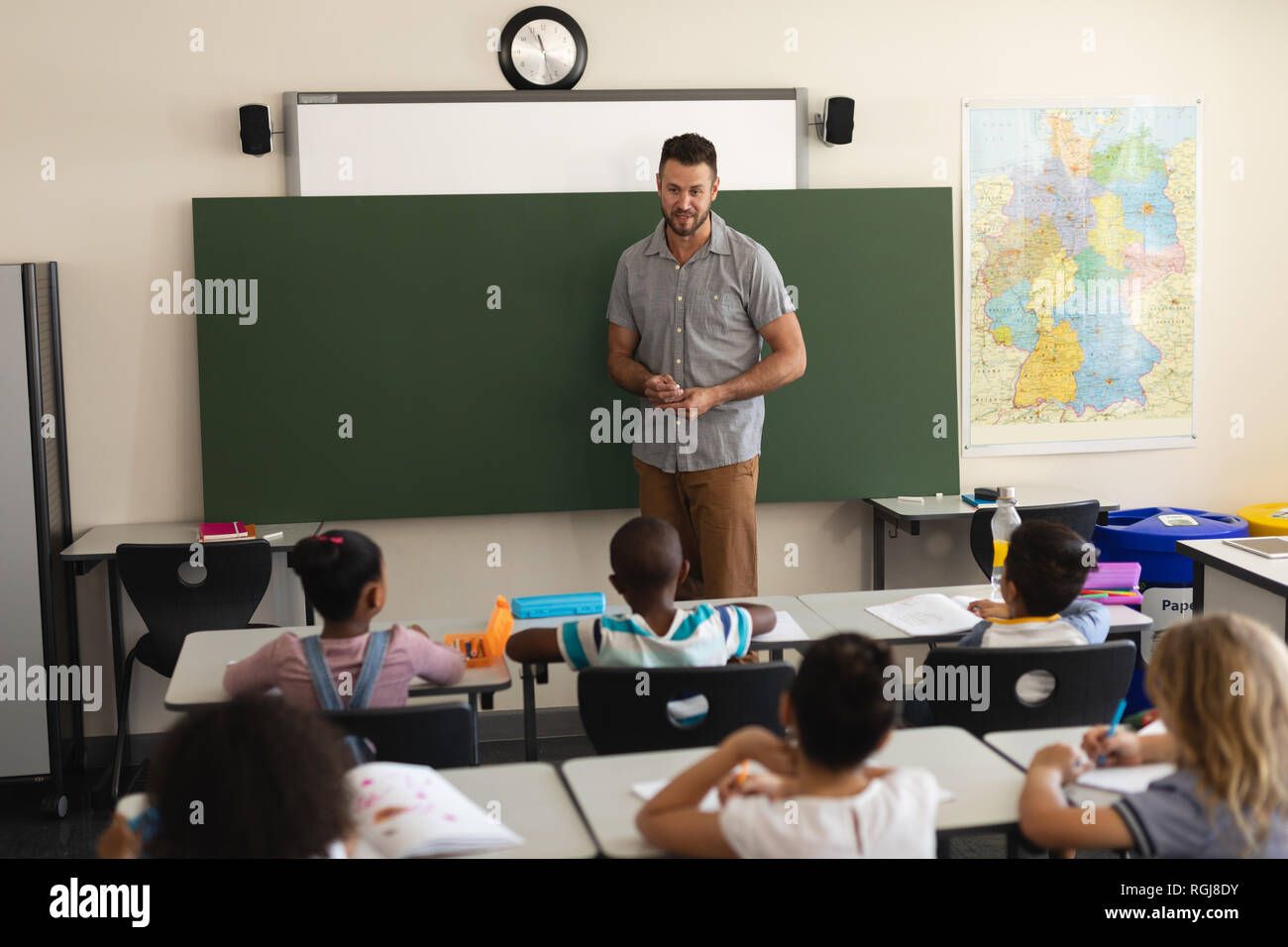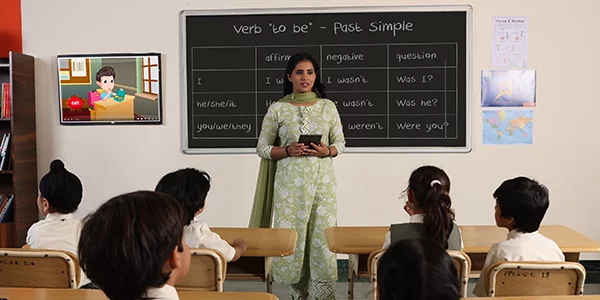Expert Tutors Offering Primary Science Tuition Singapore for All Grades
Expert Tutors Offering Primary Science Tuition Singapore for All Grades
Blog Article
A Comprehensive Guide to the Numerous Discovering Methods in Key Science Instruction
The exploration of diverse discovering methods in primary scientific research guideline offers a chance for educators to boost trainee involvement and understanding dramatically. By taking a look at hands-on understanding methods, inquiry-based methods, and collective techniques, we can determine reliable methods that satisfy numerous discovering styles. In addition, the combination of technology and separated instruction plays a vital function in promoting a comprehensive environment. However, the inquiry stays: just how can these techniques be efficiently implemented in the class to maximize their influence? The solution hinges on a closer evaluation of each approach and its effects for teaching scientific research.

Hands-On Learning Techniques
Hands-on learning strategies play an essential role in key scientific research instruction, involving students in active exploration and trial and error. These methods allow students to connect straight with products and sensations, promoting a deeper understanding of scientific concepts. By making use of manipulatives, designs, and real-life experiments, teachers produce an atmosphere where trainees can observe, hypothesize, and examine their ideas.
Such strategies not just enhance understanding however additionally cultivate critical thinking and analytical abilities. When pupils join tasks like building easy devices, planting seeds, or conducting chemical responses, they are motivated to ask inquiries and look for answers with their very own observations. This experiential approach aids to debunk complicated clinical concepts, making them a lot more accessible and relatable.
Additionally, hands-on understanding promotes cooperation among peers, as students often work in groups to conduct experiments or share findings. This team effort not just improves their understanding experience however also establishes necessary social skills. Inevitably, incorporating hands-on strategies in primary science instruction cultivates a long-lasting love of knowing and inquisitiveness concerning the natural globe, laying a strong foundation for future scholastic searches in scientific research and past.
Inquiry-Based Knowing
Inquiry-based learning is a training approach that urges trainees to ask concerns, check out phenomena, and build their own understanding of scientific concepts. This technique shifts the emphasis from traditional teacher-led guideline to an extra student-centered experience, where learners take the campaign in their educational trip. By fostering curiosity, inquiry-based discovering promotes deeper involvement with the material, permitting pupils to discover subjects in a meaningful context.
In technique, this strategy commonly includes hands-on experiments, monitorings, and crucial reasoning activities that straighten closely with the clinical technique. Pupils are encouraged to formulate theories, design investigations, and examine data, which grows crucial abilities such as analytic and logical reasoning. The duty of the instructor in this structure is to help with exploration, directing pupils with the inquiry procedure while motivating independent idea and collaboration.
Moreover, inquiry-based understanding supports a feeling of possession over the discovering procedure, encouraging pupils to go after expertise actively. This technique not just improves understanding of scientific principles however also fosters a lifelong love for learning, gearing up students with the abilities essential to navigate a progressively complex globe.
Collaborative Learning Approaches
Joint discovering methods encourage pupils to participate in significant interactions with peers, promoting a common duty for their educational end results. In main science direction, these strategies encourage students to interact to check out clinical principles, address problems, and carry out experiments (primary science tuition Singapore). By joining group activities, students can leverage diverse viewpoints, enabling richer understanding and retention of clinical understanding
One secret element of joint learning is the emphasis on communication skills. Students need to articulate their thoughts, listen actively to others, and work out ideas, all of which are essential expertises in both real-world and scholastic contexts. This social interaction not just enhances their understanding of scientific principles yet likewise promotes team effort and dispute resolution abilities.
When students see the worth of their payments within a team, they are extra most likely to take ownership of their knowing trip. On the whole, including joint understanding methods in main scientific research direction cultivates a dynamic knowing atmosphere that prepares students for future scholastic and social obstacles.
Technology Combination in Scientific Research
The combination of innovation in primary science direction boosts finding out experiences by offering innovative devices and sources that support different mentor methodologies, consisting of collective knowing - primary science tuition Singapore. Making use of digital systems, simulations, and interactive applications permits students to involve deeply with clinical concepts, helping with a much more hands-on strategy to knowing
Online labs, for example, allow students to perform experiments securely and effectively, promoting inquiry-based learning. These tools can replicate real-world scientific scenarios, permitting trainees to imagine complicated processes that over here would be hard to reproduce in a conventional class setup. Innovation fosters interaction and partnership amongst pupils, as they can share findings and function with each other on jobs with online systems.
Furthermore, multimedia discussions and instructional videos can enrich lessons by accommodating varied learning designs, making abstract principles a lot more accessible. Data evaluation tools additionally encourage students to collect and analyze scientific data, reinforcing essential believing abilities. On the whole, the critical unification of innovation in main science direction not just enhances interaction however additionally prepares students for a highly innovative culture, equipping them with important abilities for future clinical undertakings.
Distinguished Instruction Strategies
Set apart guideline approaches are crucial for addressing the diverse needs of students in primary scientific research Bonuses education. These methods allow instructors to customize their teaching methods to accommodate differing abilities, interests, and discovering designs within the class. By employing distinguished instruction, instructors can create an inclusive atmosphere that promotes involvement and enhances understanding of clinical concepts.
One efficient approach is to utilize versatile grouping, which permits trainees to work together with peers at comparable skill degrees or with differing point of views. This approach urges peer understanding and advertises vital thinking. Additionally, providing options in assignments can empower pupils, permitting them to select tasks that resonate with their passions while still fulfilling curricular objectives.
Furthermore, including tiered assignments is an additional beneficial method. Deliberately jobs with differing levels of intricacy, instructors can ensure that all pupils are suitably tested, regardless of their effectiveness. Utilizing developmental analyses to gauge recognizing additional allows educators to adjust their training approaches dynamically, ensuring that each student receives the assistance they need.
Eventually, executing differentiated direction methods in main scientific research education and learning not only boosts student discovering outcomes yet additionally cultivates a passion for scientific research, preparing students for future scholastic searches.

Final Thought
In summary, reliable main scientific research guideline requires a diverse technique that encompasses hands-on discovering, inquiry-based approaches, and collaborative techniques. The assimilation of technology and differentiated instruction additionally provides to varied learning styles, fostering a setting favorable to expedition and essential thinking. By executing these methods, teachers can enhance trainee engagement and comprehension, eventually supporting a lifelong enthusiasm for science and inquiry. Such thorough techniques are important for creating educated and interested future researchers.
The expedition of diverse knowing approaches in key science direction offers a possibility for educators to enhance pupil involvement and understanding significantly.Hands-on understanding methods play a pivotal duty in key scientific research direction, involving pupils in active exploration and experimentation.Inquiry-based understanding is an instructional strategy that motivates students to ask concerns, examine sensations, and build their own understanding of a fantastic read scientific concepts.Joint learning techniques encourage students to engage in purposeful communications with peers, promoting a shared duty for their educational end results. Generally, incorporating collective understanding methods in key science instruction cultivates a vibrant knowing atmosphere that prepares trainees for future scholastic and social obstacles.
Report this page